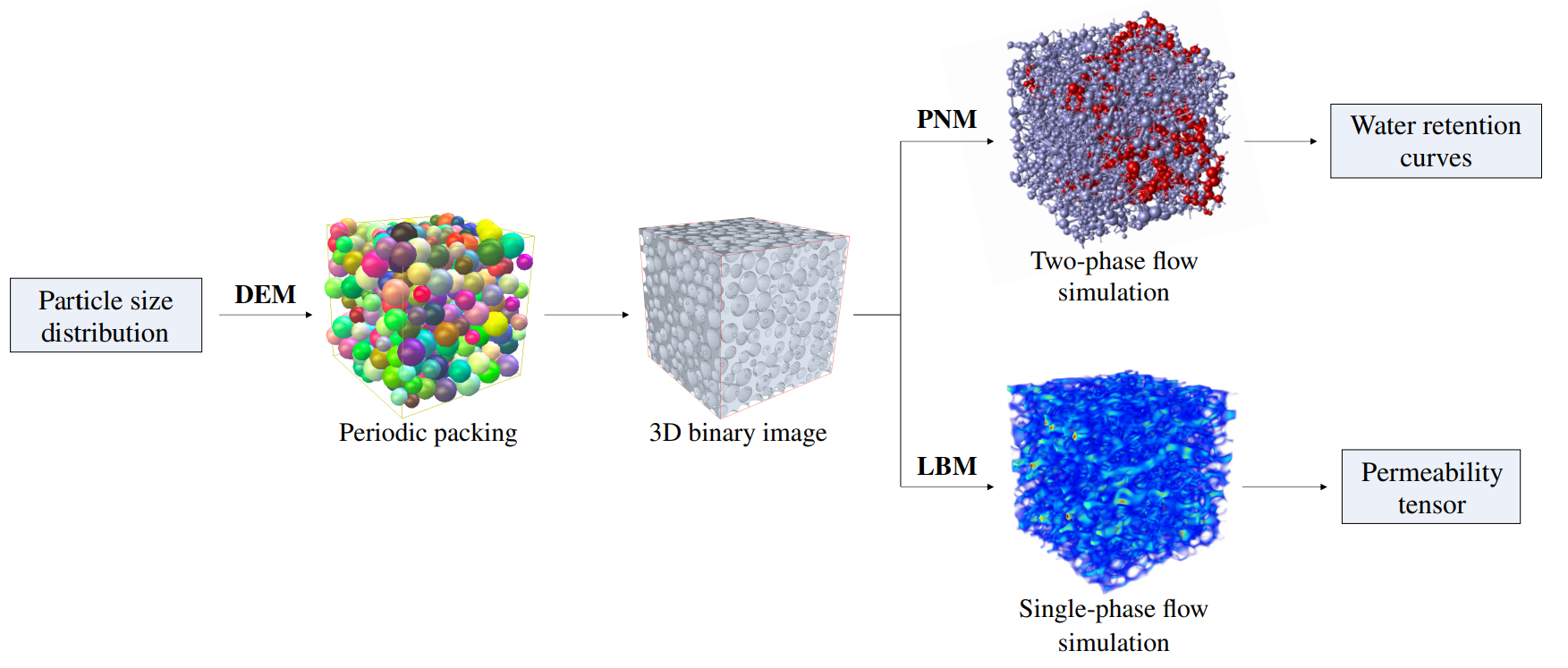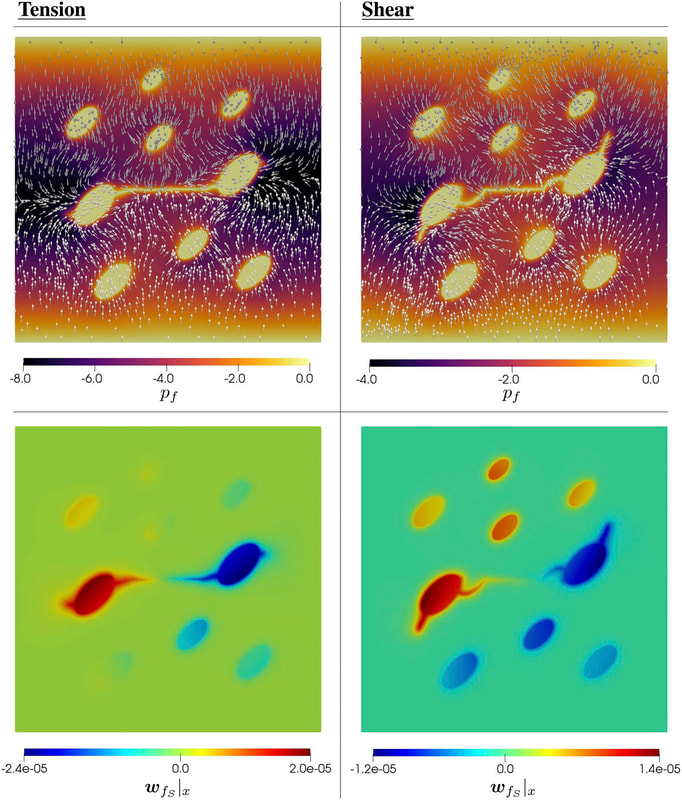|
Predicting the hysteresis retention behaviors of wetted porous media with a hand-crafted model can be a difficult task, especially for deformable porous media undergoing multiple wetting and drying cycles. In this, work, we introduce a model-free reinforcement learning algorithm that functions as an AI agent to design a recurrent neural network that predicts the water recurrent of a porous medium. As such, the AI agent may conduct numerous trial-and-errors to fine-tune the hyperparameters and design the neural network that yields the optimal performance. Preprint available at [URL].
0 Comments
In this work, our goal is to create a generic meta-model that generates constitutive laws for any rate-independent elastoplastic solid with non-vanishing yield surface. Instead of introducing complex neural network to facilicate the machine learning, we break down the process of writing constitutive laws into multiple parts (elasticity, yield surface evolution and plastic flow) each associated with a supervised learning problem designed for generating functionals with properties. This meta-model enable us to (1) more effectively explore the parametric space (i.e. knowing which experiments will improve the model performance), (2) discover previously unknown hardening/softening mechanisms (e.g. any deformation and translation of the yield surface in the principal stress space and the extension to general stress space), and (3) enforce/examine thermodynamic constraints (e.g. Drucker's Postulate) #machinelearning4mechanics #materialmodels. Preprint available [here]. An immersed phase field fracture model for microporomechanics with Darcy–Stokes flow
Physics of Fluids 33, 016603 (2021); https://doi.org/10.1063/5.0035602 Hyoung Suk Suh (서형석) and WaiChing Sun (孫維正) ABSTRACT This paper presents an immersed phase field model designed to predict the fracture-induced flow due to brittle fracture in vuggy porous media. Due to the multiscale nature of pores in the vuggy porous material, crack growth may connect previously isolated pores, which leads to flow conduits. This mechanism has important implications for many applications such as disposal of carbon dioxide and radioactive materials and hydraulic fracture and mining. To understand the detailed microporomechanics that causes the fracture-induced flow, we introduce a new phase field fracture framework where the phase field is not only used as an indicator function for damage of the solid skeleton but also used as an indicator of the pore space. By coupling the Stokes equation that governs the fluid transport in the voids, cavities, and cracks and Darcy’s flow in the deformable porous media, our proposed model enables us to capture the fluid–solid interaction of the pore fluid and solid constituents during crack growth. Numerical experiments are conducted to analyze how the presence of cavities affects the accuracy of predictions based on the homogenized effective medium during crack growth. |
Group NewsNews about Computational Poromechanics lab at Columbia University. Categories
All
Archives
July 2023
|





 RSS Feed
RSS Feed